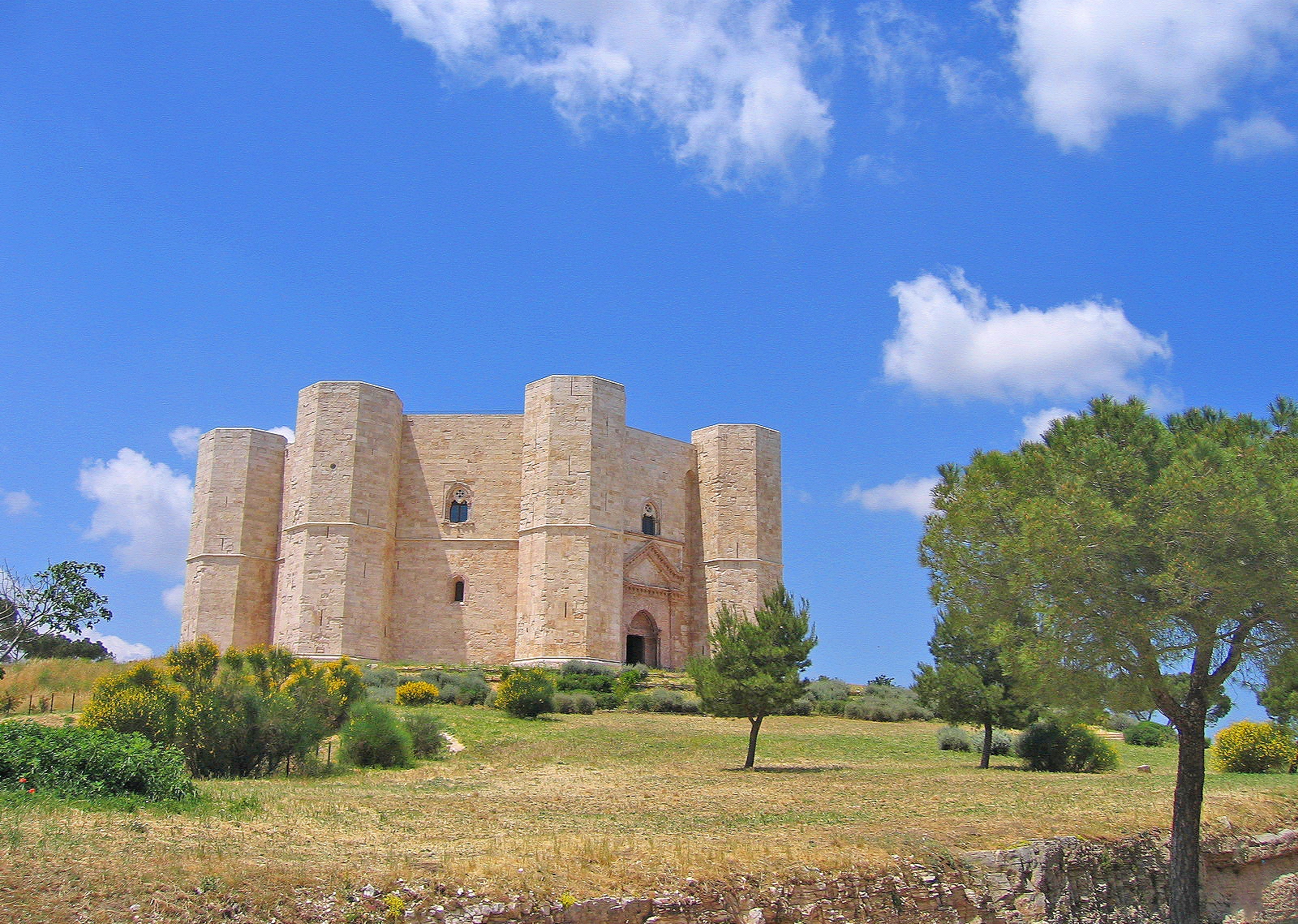
Apulia is a fantastic region which offers its visitors beautiful scenery, a pristine sea and lots of art and culture: the beaches of Salento, UNESCO sites such as Alberobello, not to mention the beautiful buildings built by Frederick II of Swabia, who loved this land and gave it monuments of inestimable value. Let’s begin with the imposing and impressive Castel del Monte, which also forms part of the UNESCO world heritage list. It was erected in the thirteenth century and its massive octagonal structure dominates the small stretch of the Western Murgia.
The Swabian Angiovin Castle of Lucera also presents a structure similar to that of Castel del Monte and is very impressive. Little remains of this imperial palace with a quadrangular base, whereas the walls with towers erected by Charles I of Anjou are still visible.
Frederick II loved Apricena, where he built the Domus Precina, a winter residence, on the remains of which a magnificent castle was erected in 1658. The ancient settlement of Castelpagano - with the village and the Rocca – is historically linked to the Domus Precina. Frederick II restored it for his hunting amusement and installed here a garrison of trusted Saracens.
The castle of Monte Sant'Angelo is also a place linked to Frederick II. Once a Norman fortification built on the defensive system of the Lombard period, it underwent numerous restorations by the emperor who stayed here for a few years together with his mistress Bianca Lancia, and where two of his children were born. Several modifications were subsequently also made by the Angevins and the Aragonese.
Frederick of Swabia also lived together with Bianca Lancia in the castle of Gioia del Colle, which was also used as a royal residence in addition to having defensive purposes. Built by the Normans in 1100 at the behest of the emperor, it underwent a significant expansion and restauration of the courtyard, the related buildings and the Tower of the Empress.
One of the most beautiful places in the wonderful city of Trani is the Swabian castle, the favourite residence of Manfred, son of Frederick II, who celebrated here his second marriage to Helen of Epirus. Subsequent changes have overturned the old plant to which the keep, the three towers and the walls towards the sea belong.
In the city of Fiorentino, where the emperor died in 1250, there is another imperial residence of which only an arched vault and a section of the walls, fragments of capitals, columns, cornices and stained-glass windows remain, testimony of the palatium’s richness of decoration, regrettably later used as a quarry.
Another impressive castle, unfortunately not open, is the one of Vieste, overlooking the sea, where the emperor only stayed twice. Built in 1240 as a "royal fortress", within a project of coastal fortification, it was radically changed by the Spaniards with interventions carried out between 1535 and 1559.
A massive castle enclosed by towering and inaccessible square towers overlooks the city of Bari. Its original nucleus dates back to the Norman-Swabian period. It was damaged in 1156 and Frederick II restored and softened it around 1233, giving it the appearance of a residence. Several changes were then made by the Spaniards.
Brindisi also was one of Frederick’s cities, here in fact the emperor ordered the construction of a square building with corner towers and surrounded by a moat; according to tradition, he lived here with his second wife Jolanda of Brienne. The castle’s current appearance is the work of Ferdinand I (1481) Charles V (1550) and today houses the seat of the Military Command of the Navy.
The Castle of Oria, with its magnificent and spectacular triangular building that incorporates the massive square tower, had a solely defensive purpose.
Another important monument is the Castle of Barletta, where in 1228 the emperor held the famous Diet before leaving for the Crusades. Of Norman age, it shows Swabian iconographic symbols such as the imperial eagle clutching a hare in its claws, carved in the lunettes of some windows.



